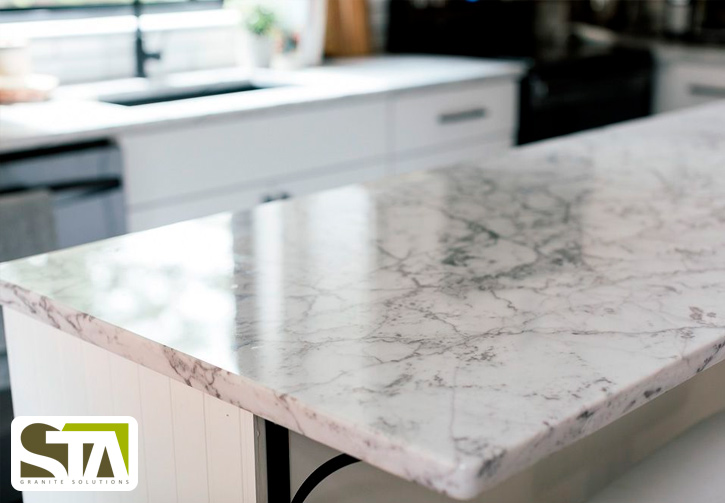CONSIDERATIONS FOR CHOOSING GOOD KITCHEN CABINETS TO MATCH YOUR GRANITE, MARBLE, AND QUARTZ COUNTERTOP PT 1
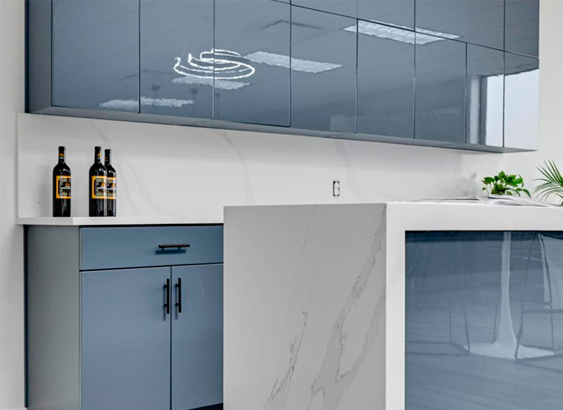
Some accepted features of high-end kitchen cabinets help when you shop for such cabinets.
What are quality cabinets?
You can define high-end cabinets as a combination of three factors: quality materials, quality workmanship, and unique style.
quality materials
Kitchen cabinets are boxes that are attached to the walls and rest on the floor. So it's no coincidence that the industry language for this part of the construction is "the box."
With quality cabinets, the box should not be made of MDF or any other type of pressboard. Good kitchen cabinet boxes can be built from MDF, but the best cabinets are built from plywood and solid wood.
Plywood: The plywood used in quality kitchen cabinets is not the kind found on the bulk shelves at most home centers or lumberyards. Instead, it's furniture-grade plywood that performs as well or even better than solid wood. The plywood will be in the box, not the doors or other finishing surfaces.
Solid Wood – Solid wood doors and drawer fronts are parred for the course in high-end kitchen cabinets. Cabinets made of solid wood are the best option for their quality.
Melamine Interior – It is often better to line the inside of cabinet boxes with melamine rather than leave them as-is wood. Wood can react with moisture or be stained by food. Melamine is easier to keep dry and clean.
The outside dimensions of the box vary. But inside each box, the recommended thicknesses of the panels are:
• Doors: 3/4" thick
• Floor Panels: 1/2" thick
• Ceilings (wall cabinet only): 1/2" thick
• Back panel (wall cabinet only): 1/2" thick
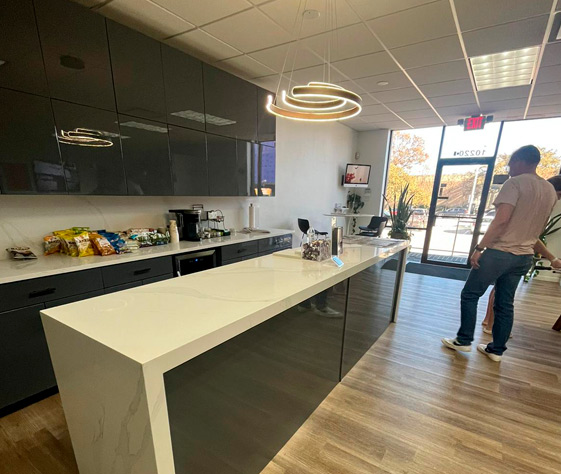
The importance of having adequate equipment to cut dekton and porcelain
Why do products such as Dekton need special/different tools than those that are used for cutting granite and marble?
Material hardness is the key to understanding why you need different tools to fabricate Dekton. The material has a
The cutting process requires trimming the edges to release tensions. Then you have to follow cutting recommendations, which include using plenty of water, the proper speed, feed rate, etc. Once you follow the rules, it’s a piece of cake.


In this sense, Dekton’s edge is very easy to work with since the material is very homogeneous, and it is easy to get very good results. Any fabricator can do it well on the first attempt.
What are some common mistakes that fabricators are making when it comes to cutting this material? And, what are some common mistakes with doing edging or doing sinkholes or something?
The main mistake is trying to fabricate Dekton as if it was a granite or quartz composite. You will fail if you use the same tools, speed rates, and so on. Another common mistake is trying to cut Dekton in uneven support. It is a common source of problems too.
Sometimes people ask about what machine is best to cut Dekton. I believe the key is not the machine but the tools and proper maintenance. I have seen people with very modest equipment doing amazing things and the other way around.
7 Keys for Cutting Ultra-Compact and Sintered Dekton and Porcelain Materials







It may seem too simple or too intuitive to matter, but less than adequate water AND hoses positioned incorrectly is the most common error causing headaches among cutting these materials.
One of the more overlooked aspects of successful cutting is, to the degree that your table is not level in the horizontal plane, vibrations will occur. This unevenness can result in chipping and likely breaking the edge of your slab.
As cliche, as it may sound, choosing the right blade for the material you are processing, is critical.
While each manufacturer of ultra-compact and sintered porcelain materials may, or may not have tensioning strips built into the perimeters of each slab, if they are not removed before cutting, the slab is at higher risk of cracking or breaking.
Using the same feed rate and RPMs you may be accustomed to when cutting other materials can be a recipe for trouble. Unlike fabricating more common materials such as marble and granite, we’ve seen the most success cutting ultra-compact and sintered porcelain materials when following a systemized approach is used.
While plunge cutting tends to be of little concern for most sawyers when cutting ultra-compact and sintered porcelain materials it can pose big problems resulting in cracking or breaking your slab.
Projects requiring a sink cut-out can be an obstacle many fabricators dread. Since we already know plunging is not the ideal way to go about this, what are your options? When preparing a sink cut-out, it is advised to drill each of the four corners with a 1/2” core bit before to start initiating cutting.
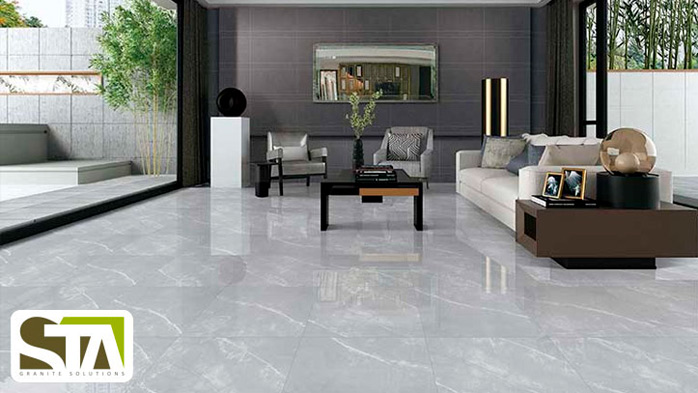
PORCELAIN FOR YOUR HOME, TILES
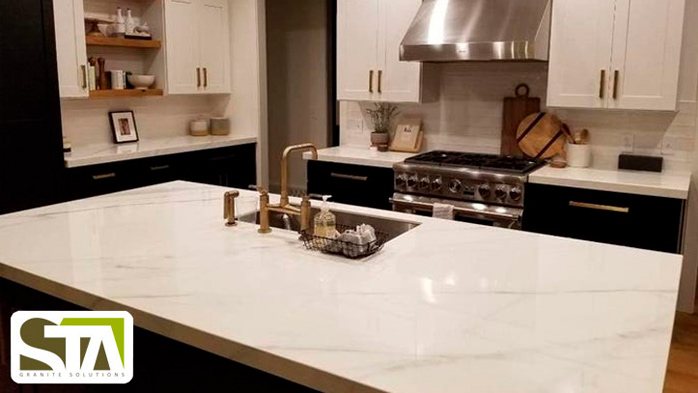
PORCELAIN FOR YOUR HOME, COUNTERTOPS FOR YOUR KITCHEN
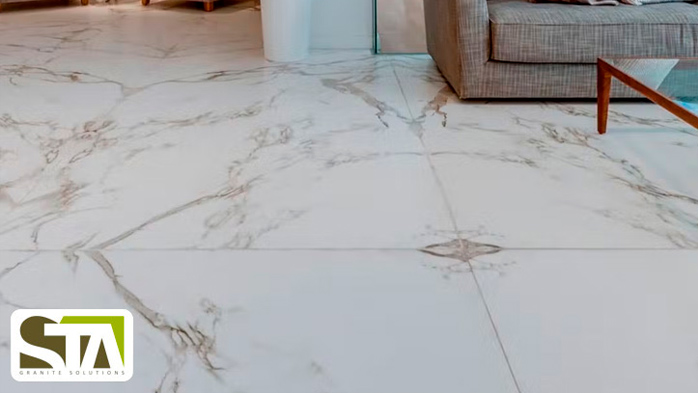
DEKTON FOR YOUR HOME, FLOORS, AND PAVEMENTS
- 1
- 2
- 3
- 4
- 5
- 6
- 7
- 8
- 9
- 10
- 11
- 12
- 13
- 14
- 15
- 16
- 17
- 18
- 19
- 20
- 21
- 22
- 23
- 24
- 25
- 26
- 27
- 28
- 29
- 30
- 31
- 32
- 33
- 34

